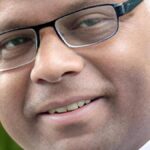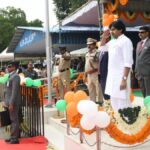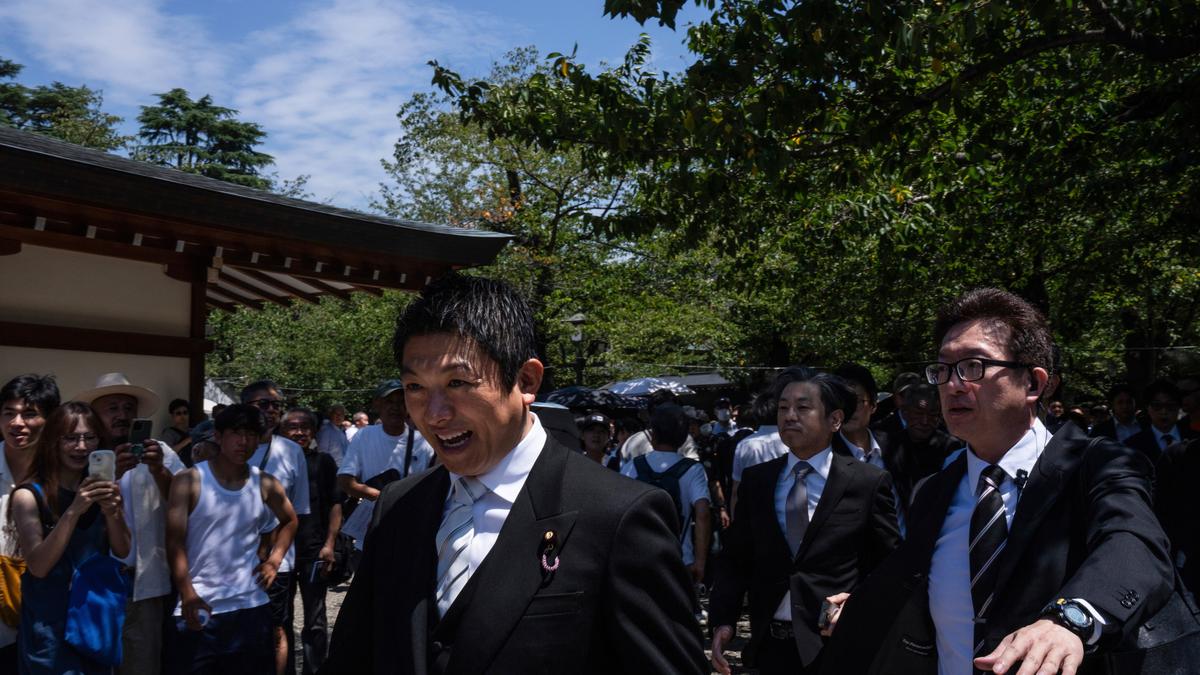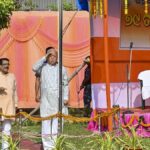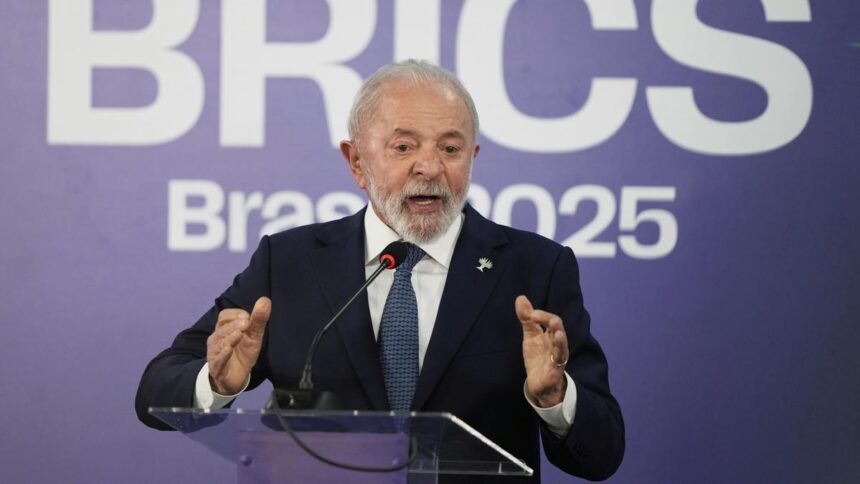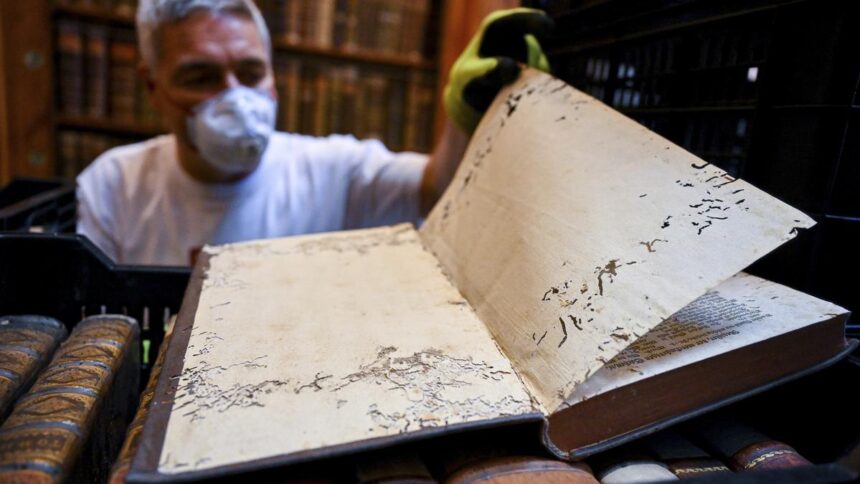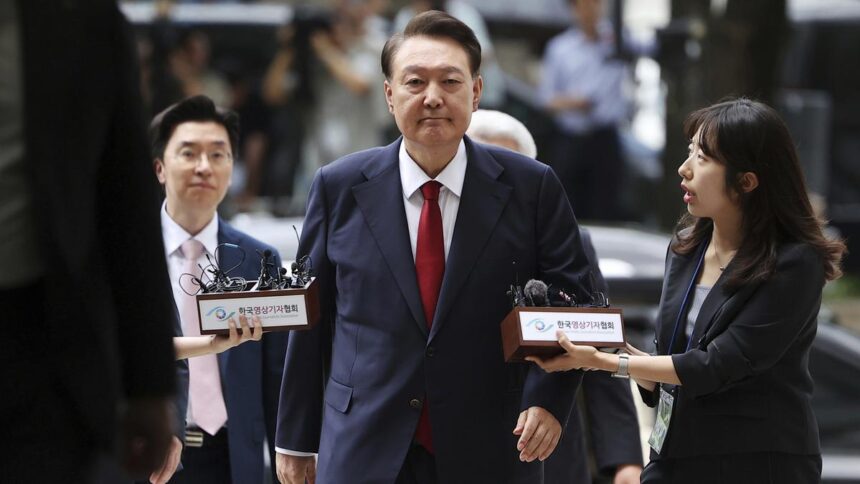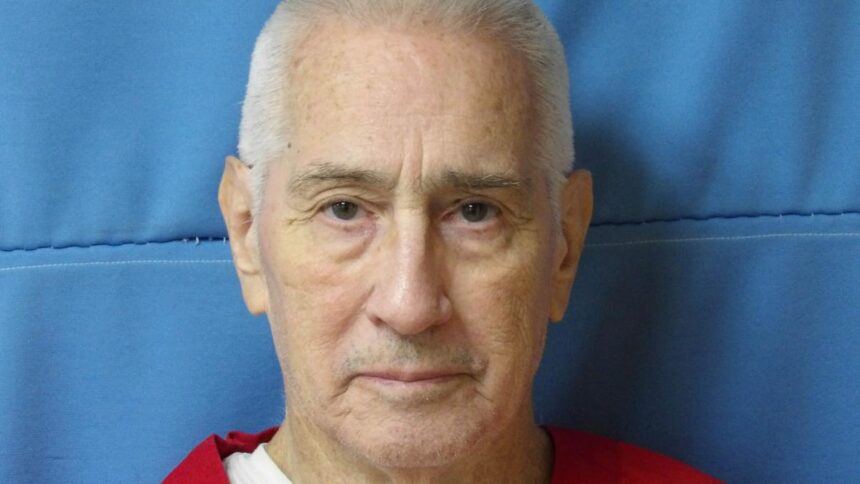
Sohei Kamiya, left, leader of Japan’s far-right populist Sanseito party, walks through the Yasukuni Shrine on the 80th anniversary of Japan’s surrender in World War II, in Tokyo, Friday, Aug. 15, 2025.
| Photo Credit: AP
Tens of thousands of people braved blazing heat to pay their respects at a controversial Japanese shrine on Friday (August 15, 2025), as Emperor Naruhito spoke of his “deep remorse” on the 80th anniversary of the nation’s World War II surrender.
A Cabinet Minister was among the visitors to Yasukuni Shrine in Tokyo, which honours 2.5 million mostly Japanese soldiers who perished since the late 19th century, but also enshrines convicted war criminals.
Trips to the shrine by government officials have angered countries that suffered Japanese military atrocities, particularly China and South Korea.
It came as Naruhito said he felt “a deep and renewed sense of sorrow” in a sombre speech alongside Empress Masako in an indoor arena in the centre of the city, where the national flag flew half mast outside.
“My thoughts are with the numerous people who lost their precious lives in the last war and their bereaved families,” the 65-year-old said.
“Reflecting on our past and bearing in mind the feelings of deep remorse, I earnestly hope that the ravages of war will never again be repeated.”
Prime Minister Shigeru Ishiba also addressed the ceremony, pledging “to uphold the painful memories of war… passing them down across generations, and pursue actions toward lasting peace”.
Ishiba, a political moderate, sent a customary offering to Yasukuni, according to Kyodo news.
No Japanese Prime Minister has visited the shrine since 2013, when a trip by then-premier Shinzo Abe sparked fury in Beijing and Seoul, and a rare diplomatic rebuke from close ally the United States.
Reflection, wrongdoings
With temperatures above 30C in the picturesque grounds around the shrine, there was a sea of umbrellas as people tried to shelter from the sun. At least two people became unwell in the heat and were forced to seek help.
Takashi Eguchi, a 53-year-old graphic designer from Tokyo, told AFP that Yasukuni served as an accessible place in the heart of the city for ordinary people to reflect on the nation’s history.
“We live in a moment when wars have broken out or are likely to break out in various places,” he said. “So I came here to look back at what Japan has done, including its failures.”
Another visitor, who identified himself only by his surname Harada, came dressed in a Japanese imperial army uniform to honour the sacrifice of the war dead.
“I know the time will come when war veterans will no longer be with us. I wanted to do my part to continue their legacy,” said the 39-year-old from the central prefecture of Nagano.
“You have to look at all aspects of wars. Good things and bad things happened.”
Agriculture Minister Shinjiro Koizumi, seen as a potential future prime minister, paid a visit to the shrine early morning, as he does annually on August 15.
Ishiba’s chief political rival, Sanae Takaichi — who leads the nationalist wing of the ruling Liberal Democratic Party, was also there — as were members of the “Japanese first” Sanseito party, which made strong gains in July’s upper house election with its “anti-globalist” drive.
Naruhito, Masako and their daughter Princess Aiko are next month due to visit Nagasaki to meet survivors of the devastating atomic bomb and honour the war dead in what is reportedly the emperor’s first trip there since he acceded to the throne in 2019.
Published – August 15, 2025 12:44 pm IST



